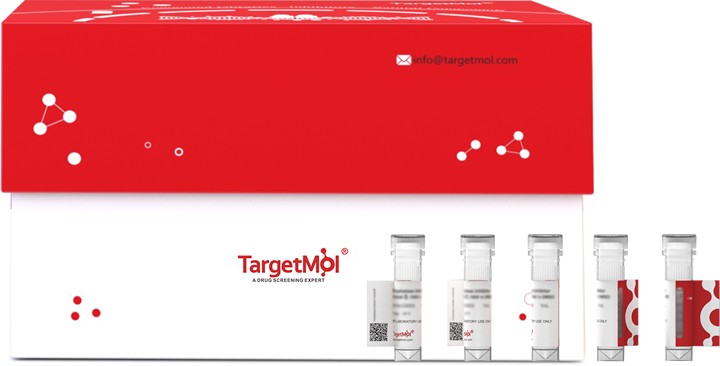- Remove All
 Your shopping cart is currently empty
Your shopping cart is currently empty
PARK7/DJ-1 Protein, Human, Recombinant (His)
Parkinson's disease locus DJ-1 (PARK7) is a differentially expressed transcript. DJ-1 plays a physiologic role in protection of erythroid cells from oxidant damage, a function unmasked in the context of oxidative stress. PARK7 belongs to the peptidase C56 family of proteins. It acts as a positive regulator of androgen receptor-dependent transcription. It may also function as a redox-sensitive chaperone, as a sensor for oxidative stress, and it apparently protects neurons against oxidative stress and cell death. Mutations in the DJ-1 gene are associated with rare forms of autosomal recessive early-onset Parkinson's disease (PD). DJ-1/p53 interactions contribute to apoptosis resistance in clonal myeloid cells and may serve as a prognostic marker in patients with myelodysplastic syndromes (MDS). DJ-1 regulates redox signaling kinase pathways and acts as a transcriptional regulator of antioxidative gene batteries. Therefore, DJ-1 is an important redox-reactive signaling intermediate controlling oxidative stress after ischemia, upon neuroinflammation, and during age-related neurodegenerative processes. Augmenting DJ-1 activity might provide novel approaches to treating chronic neurodegenerative illnesses such as Parkinson's disease and acute damage such as stroke.

PARK7/DJ-1 Protein, Human, Recombinant (His)
| Pack Size | Price | Availability | Quantity |
|---|---|---|---|
| 100 μg | $398 | 7-10 days |
Product Information
| Biological Activity | Activity testing is in progress. It is theoretically active, but we cannot guarantee it. If you require protein activity, we recommend choosing the eukaryotic expression version first. |
| Description | Parkinson's disease locus DJ-1 (PARK7) is a differentially expressed transcript. DJ-1 plays a physiologic role in protection of erythroid cells from oxidant damage, a function unmasked in the context of oxidative stress. PARK7 belongs to the peptidase C56 family of proteins. It acts as a positive regulator of androgen receptor-dependent transcription. It may also function as a redox-sensitive chaperone, as a sensor for oxidative stress, and it apparently protects neurons against oxidative stress and cell death. Mutations in the DJ-1 gene are associated with rare forms of autosomal recessive early-onset Parkinson's disease (PD). DJ-1/p53 interactions contribute to apoptosis resistance in clonal myeloid cells and may serve as a prognostic marker in patients with myelodysplastic syndromes (MDS). DJ-1 regulates redox signaling kinase pathways and acts as a transcriptional regulator of antioxidative gene batteries. Therefore, DJ-1 is an important redox-reactive signaling intermediate controlling oxidative stress after ischemia, upon neuroinflammation, and during age-related neurodegenerative processes. Augmenting DJ-1 activity might provide novel approaches to treating chronic neurodegenerative illnesses such as Parkinson's disease and acute damage such as stroke. |
| Species | Human |
| Expression System | E. coli |
| Tag | C-His |
| Accession Number | Q99497-1 |
| Synonyms | parkinson protein 7,HEL-S-67p,DJ-1,DJ1 |
| Construction | A DNA sequence encoding the human PARK7 (Q99497-1) (Met 1-Asp 189) was fused with a polyhistidine tag at the C-terminus. Predicted N terminal: Met |
| Protein Purity | > 85 % as determined by SDS-PAGE |
| Molecular Weight | 21.3 kDa (predicted); 25 kDa (reducing conditions) |
| Endotoxin | Please contact us for more information. |
| Formulation | Lyophilized from a solution filtered through a 0.22 μm filter, containing 20 mM Tris, 150 mM NaCl, 3 mM DTT, 5% glycerol, pH 8.0.Typically, a mixture containing 5% to 8% trehalose, mannitol, and 0.01% Tween 80 is incorporated as a protective agent before lyophilization. |
| Reconstitution | A Certificate of Analysis (CoA) containing reconstitution instructions is included with the products. Please refer to the CoA for detailed information. |
| Stability & Storage | It is recommended to store recombinant proteins at -20°C to -80°C for future use. Lyophilized powders can be stably stored for over 12 months, while liquid products can be stored for 6-12 months at -80°C. For reconstituted protein solutions, the solution can be stored at -20°C to -80°C for at least 3 months. Please avoid multiple freeze-thaw cycles and store products in aliquots. |
| Shipping | In general, Lyophilized powders are shipping with blue ice. |
| Research Background | Parkinson's disease locus DJ-1 (PARK7) is a differentially expressed transcript. DJ-1 plays a physiologic role in protection of erythroid cells from oxidant damage, a function unmasked in the context of oxidative stress. PARK7 belongs to the peptidase C56 family of proteins. It acts as a positive regulator of androgen receptor-dependent transcription. It may also function as a redox-sensitive chaperone, as a sensor for oxidative stress, and it apparently protects neurons against oxidative stress and cell death. Mutations in the DJ-1 gene are associated with rare forms of autosomal recessive early-onset Parkinson's disease (PD). DJ-1/p53 interactions contribute to apoptosis resistance in clonal myeloid cells and may serve as a prognostic marker in patients with myelodysplastic syndromes (MDS). DJ-1 regulates redox signaling kinase pathways and acts as a transcriptional regulator of antioxidative gene batteries. Therefore, DJ-1 is an important redox-reactive signaling intermediate controlling oxidative stress after ischemia, upon neuroinflammation, and during age-related neurodegenerative processes. Augmenting DJ-1 activity might provide novel approaches to treating chronic neurodegenerative illnesses such as Parkinson's disease and acute damage such as stroke. |
Dose Conversion
Sci Citations
Calculator
Tech Support
Keywords

Copyright © 2015-2025 TargetMol Chemicals Inc. All Rights Reserved.


